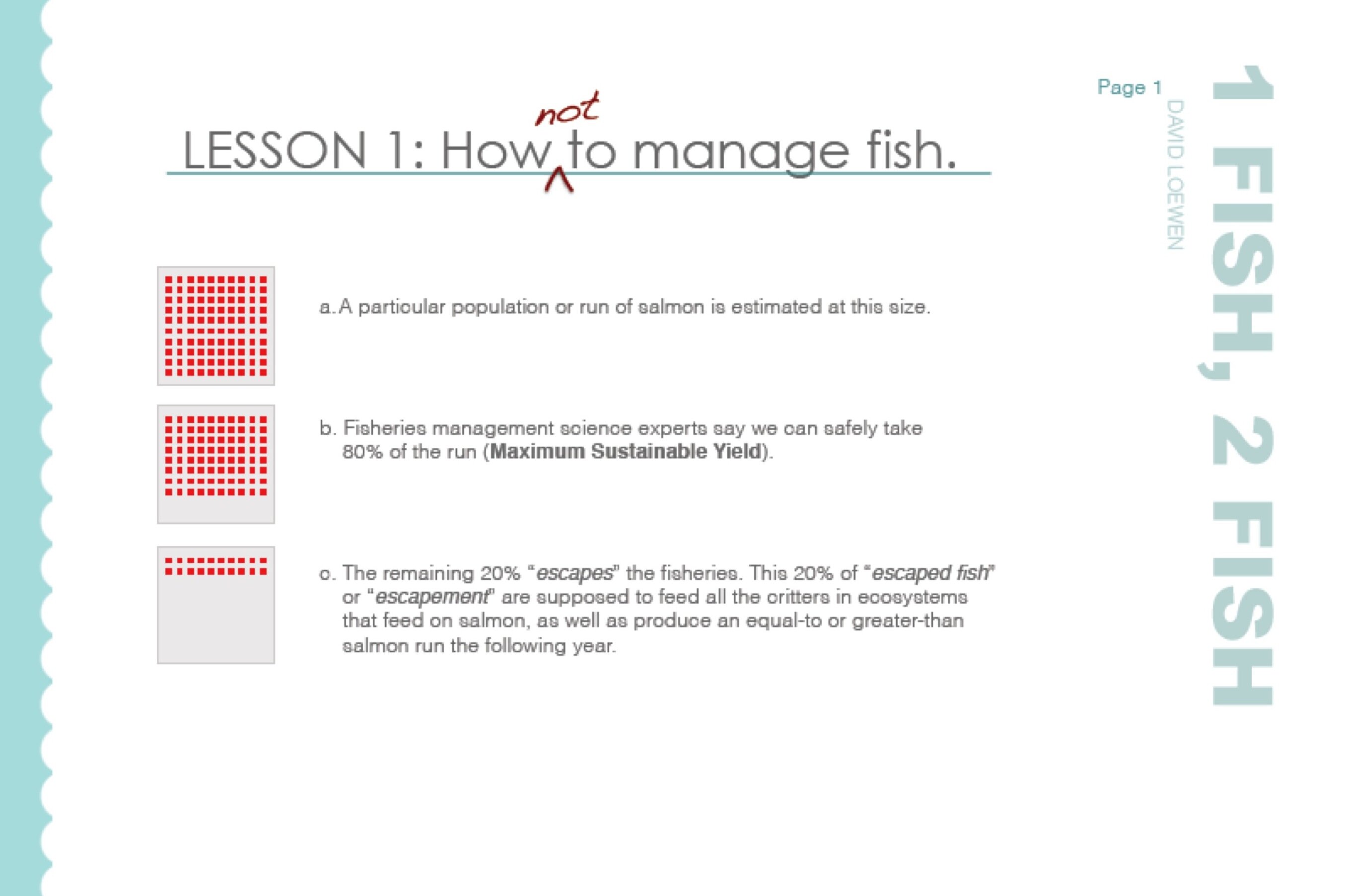New e-book on Maximum Sustainable Yield
Today is the release date for the first e-book on this site. It’s not a long one, however, maybe informative.
Here is a sample from page 1…
Please share this document with anyone — or send folks to this site to download. (Please comment at will.)
And please consider making a contribution to support this site, and future publications — look along the right hand side of this page for the PayPal link.
Maximum Sustainable Yield — A sure Recipe for Wild Salmon Extinction.
And stay tuned for more e-books coming soon.


darn good read, David. short and sweet in the truth of it all.
thanks Tracy.
Pingback:
disfrute mucho su …la lectura, ilustración y objetividad de contenido técnico político social y biológico…gracias por este ensayo literario- científico …
excelente …
muy atentamente
marcelo garcia
CHILE
¡gracias
much appreciated Marcelo.
Your salmon guy site is great. I do notice however that you focus largely on the freshwater life of salmon. In fact salmon put on 95% of their biomass in the ocean and I maintain therefore it is the ocean that is most important of all to salmon. The ocean can be seen as a collection of ocean pastures. Salmon and other ocean life reside in and on those pastures. Salmon are roving fish that move from pasture to pasture.
Just as Walt Whitman once said “all beef is grass” I say “all fish is plankton.” As the ocean pasture plankton blooms have become decimated ocean fish populations are no longer sustainable at historic abundance levels. Ocean pastures are dying due to loss of dust and vital mineral micro-nutrients and just as a pasture on land if deprived of rain the ocean pastures are dying due to loss of dust. Read this post on my blog about the Yin and Yang of pastures on land and sea.
I have shown in my 2012 ocean pasture restoration in the NE Pacific that when vital ocean pastures are restored and revived salmon and other ocean life rapidly returns to levels of historic abundance. The 2013 catch of Pink Salmon in Alaska shows this as instead of the 50 million Pink Salmon catch as projected 226 million were caught, the largest catch in all of history. The 2014 runs of Sockeye and other species on the west coast are similarly projected to be and are being seen in the greatest numbers in history. This is no mystery as those fish when they went to sea, to their nursery feeding pastures instead of mostly starving were treated to a feast.
Bringing back the fish to historic numbers can be accomplished through the caring stewardship of their ocean pastures for a fraction of the cost of freshwater salmon programs. It’s a proven fact!